Unless you’re exclusively hosting games in the comfort of your own home, you will eventually have to answer the ever-important question: “How the hell do I travel with these things?” Or more importantly, how do you transport your models without having to spend twenty minutes gluing them back together and another week or two cleaning up spots where the paint was chipped off.
In this article we’re going to look at the basics of travel with miniatures, from cases and magnets to air travel. That said, if you’d rather listen to this than read about it, there’s a video version of this article on YouTube. You can find it below:
Cases
This all starts with having cases for your minis. While you can get away with just putting minis on a tray for short trips, if you’re doing longer travel you’re eventually going to need something to secure them. And we get it – cases don’t run cheap. Warhammer’s an expensive hobby already and adding on a few hundred bucks in cases can be A Lot. But at the same time, it’s worth it to protect your minis – you’re going to get what you pay for when it comes to cases and protection, either in terms of money or time invested.
When it comes to cases and transport, the primary principle is to keep things from moving. As minis move around in transit, they’ll bump into various surfaces and other minis, and that’s when they get chipped or damage. All of the storage solutions we’ll look at basically restrict the movement of minis in some way, either by keeping them snug in some cushioned material like foam or fully immobilizing them with magnets. When they’re not on the table you want your models moving as little as possible.

Foam Trays
Foam Trays are what will come to mind for most when it comes to storage. Typically, these are a soft, spongy foam with laser-cut slots for your models to fit into. Companies like KR Multicase and Feldherr will have sets you can choose from that are sized for specific models, but more generic trays exist as well. Some instead have pluck foam, where you can remove pieces as needed to make room for your models. This is usually better for large and unwieldy models, like big monsters or oddly shaped vehicles.
Foam trays of any kind will often fit into associated boxes or bags, usually custom-made to fit each company’s foam. Games Workshop sells foam trays which can be pretty adaptable, but they’re among the more expensive options and not necessarily the best on the market, especially if you have lots of vehicles or non-infantry models.
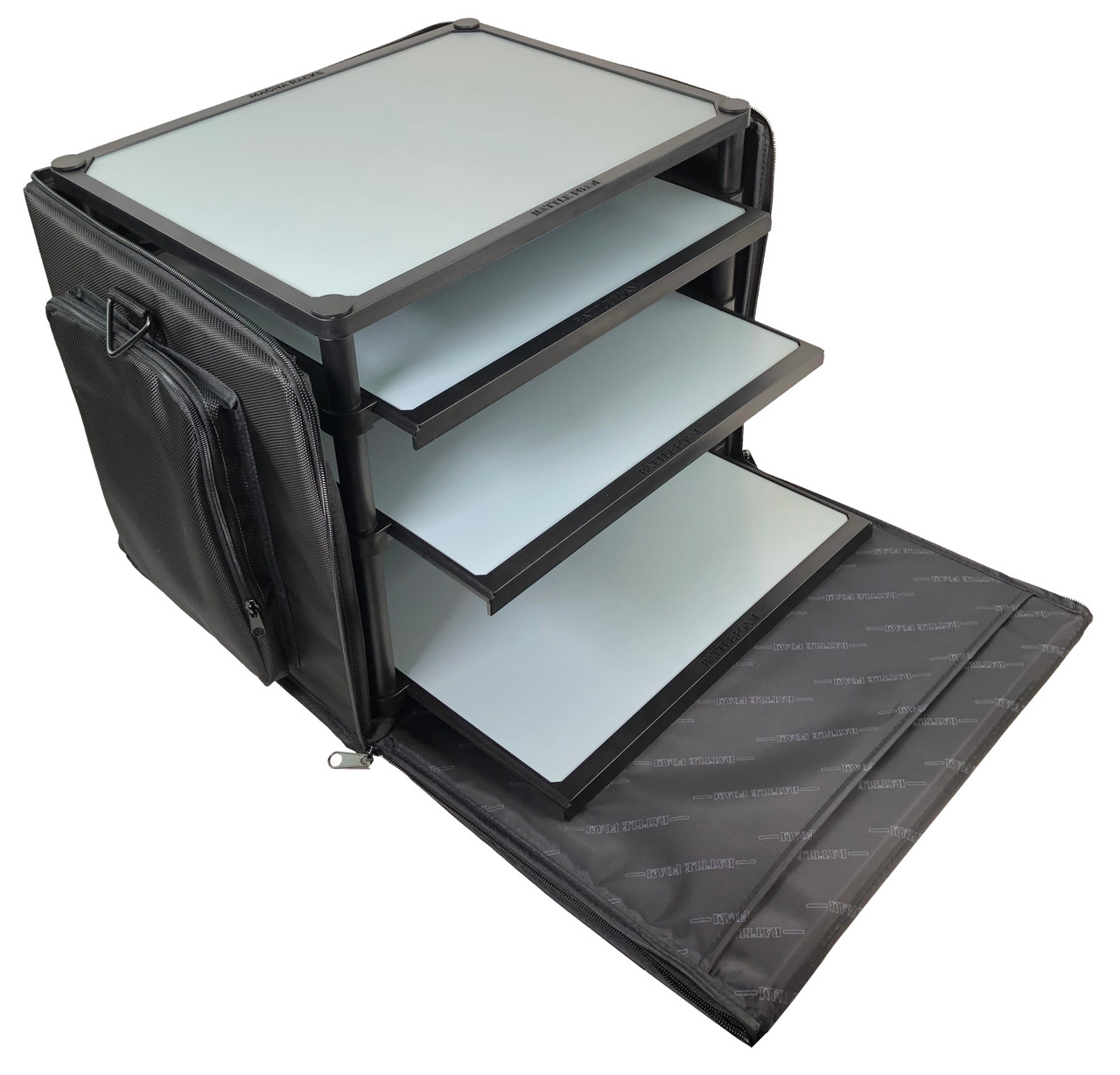
Magnetized Trays
By gluing magnets to the bottoms of your bases, it’s easy to affix your models to magnetic trays. This is one of the easiest solutions to the problem – the magnets keep your models safe by functionally immobilizing them until you pull them off the trays, and they can also double as convenient ways of shuttling your models from table to table at an event without putting them away. They also add a little extra weight to your model’s base, making them less likely to tip over.
There are a number of case manufacturers who already make vertical mini storage cases with magnetic trays – Tablewar do this, and we’ve reviewed cases from A-case once or twice before. These cases tend to have handy viewing windows as well.
DIY Solutions
While there are a lot of different solutions you can pay for in the hobby, there are as many if not more potential solutions for a do-it-yourself-er. Some of the more common include making your own foam trays by buying sheets of foam and cutting out slots from them. DIY magnetic cases are also easy to make – simply glue magnetic or metal sheets into a plastic drawer, tray, or box. And tackleboxes and Toolboxes with small compartments also make for good choices – and a metal toolbox may not require any additional magnets (though it will also be much heavier).
You can also use cases intended for other things, like tool, camera, or gun cases. These will often include foam that can hold minis, but have a major downside in that they make you a bigger target for theft (though it is funny to imagine someone who thinks they’ve stolen a professional camera opening the case to find a fistful of Skaven).
And yes, in a pinch you can always bubblewrap your minis and toss them in a shoebox or put individual models in an egg carton.
What Makes a Good Travel Case?
There are a ton of options out there for cases. Being spoiled for choice allows us to then ask: What makes a good travel case? Well, we’ve already covered models not moving around, but after that comes space – you’ll need space for all your models, obviously, and on top of that any good bag will have plenty of zippers and pockets to place your gaming accessories – things like objective markers, rulebooks, and dice. Fortunately a lot of games these days don’t require heavy rulebooks for play and have most of their features in an app, but you’ll still want pockets for dice, tape measures, cards, templates, or whatever else your game needs. Having a slot for a water bottle will also save you a hand while you move between tables, as well as a pocket for snacks. And having a loop or holder for a water bottle is another big plus – you’re going to be doing a lot of shouting and having ready access to water is huge.
We’ll talk more about air travel later, but if your case can fit in an airline overhead compartment or under the seat in front of you, that’s also ideal – it can save a lot of headache down the line.
Labeling
If you have a lot of cases from the same manufacturer (likely), you’re going to eventually have to tell them apart. No matter what solution you go with, properly labeling your storage system will not only let you find the right case in a hurry, but also help if your case gets lost or misplaced. Putting your address and contact info on or in your case could be the difference between your models getting home or languishing in lost luggage.
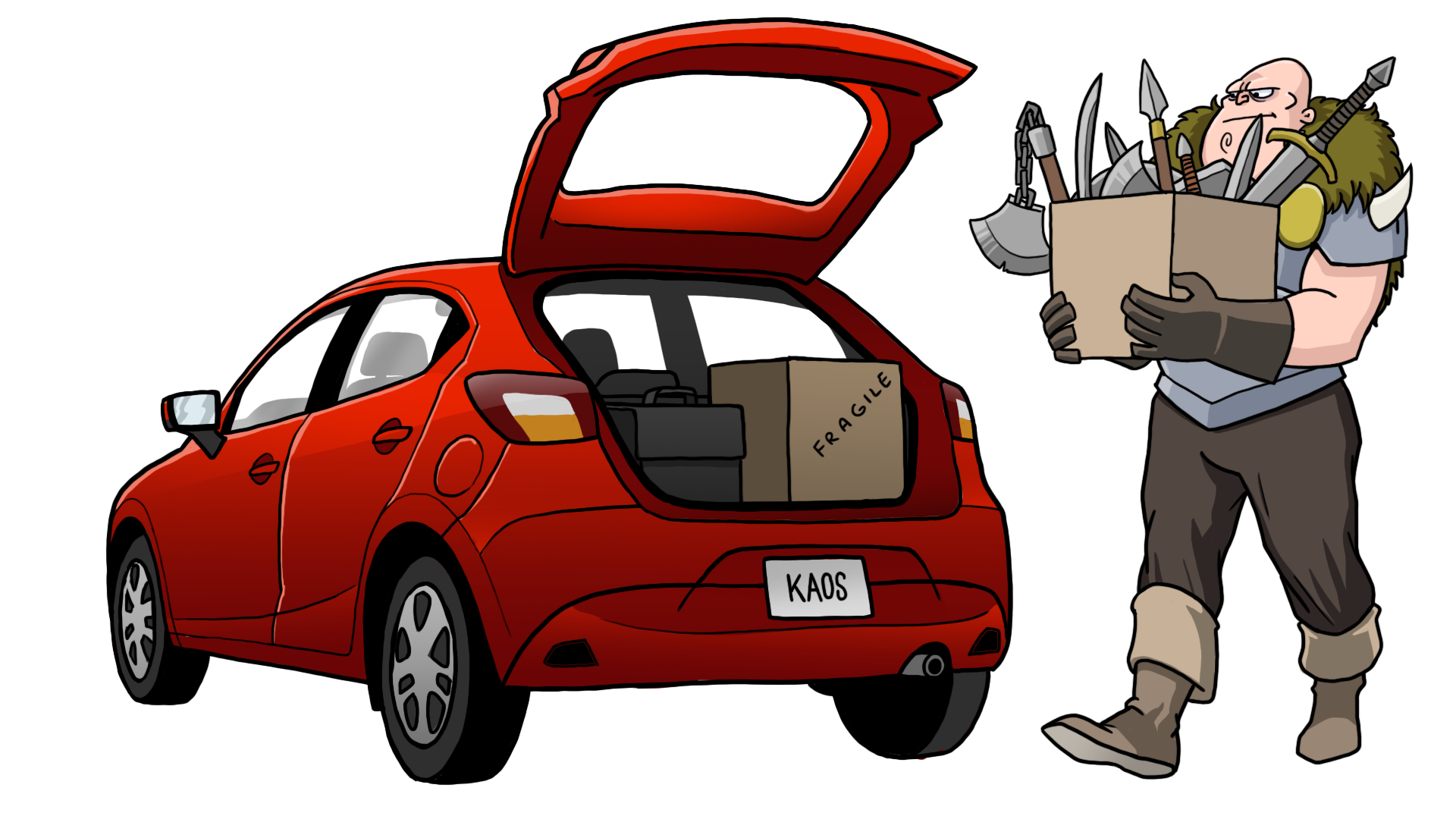
Planes, Trains, and Automobiles
Alright you’re army’s all packed, now you’ve off to the event. Well, let’s back up – how you plan on getting it to the event will affect what you pack and how. So let’s cover a few common ways to get around.
By Car
If you’re in the United States or going to an event in the next city over, this is the most likely way you’ll be getting your minis around. Fortunately, this is one of the more forgiving means of packing your stuff, and the one over which you’ll have the most control. So long as you’re not going for some parade float-level Adepticon display board, chances are good that you can fit everything you’ll need in your car. If you’re worried about cases tipping over, you can always buckle them in or lay them flat in the trunk. Again, the key here is the same as with your minis cases – you want things to move around as little as possible. That means ideally they’ll be packed snugly against other cases and boxes or secured with rope or a seatbelt.
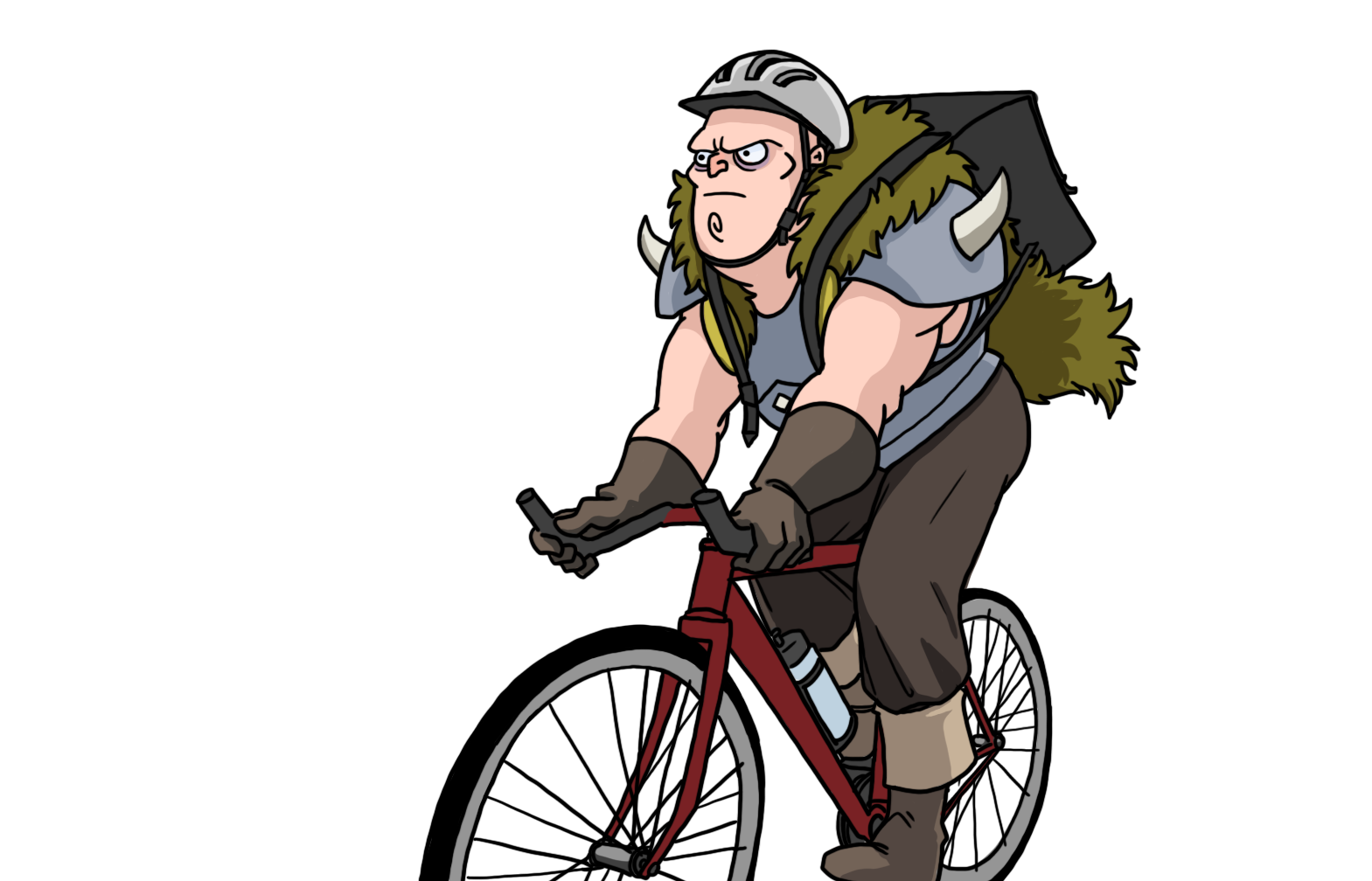
On Foot or Bike
The first time you decide to walk your army to the game store, somewhere around the fifteen minute mark you’ll wish it was in a backpack. Speaking from experience, trudging two miles down a crowded city street with a massive tackle box in each hand is less than ideal. Backpack-style cases are absolutely a must for getting around on foot or bike, or maybe a messenger bag if you’re just bringing along a small skirmish crew.
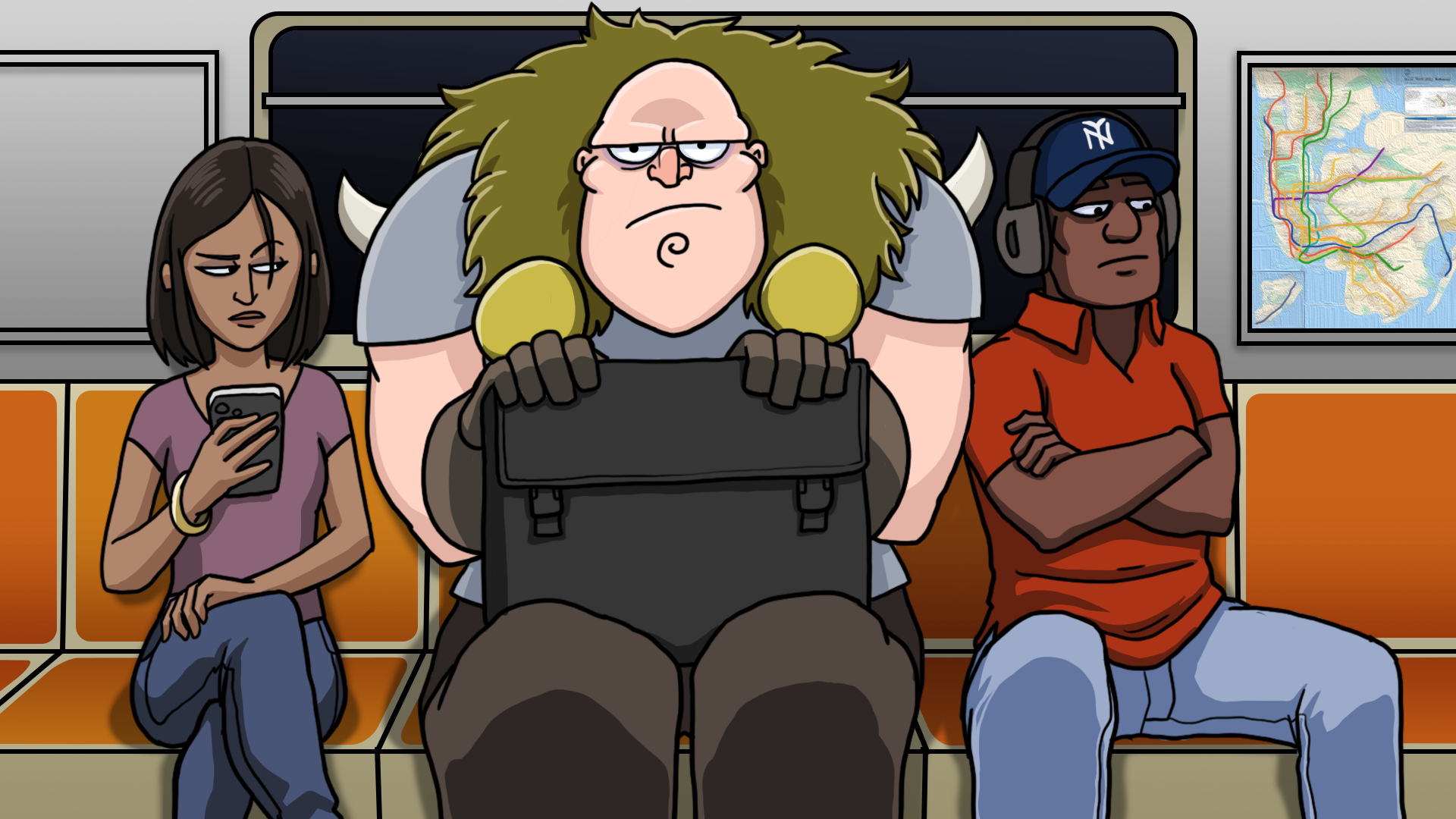
Public Transit
City buses, subways and light rail have concerns of their own, most of them social. You don’t want to take up two seats with your army or swing a bag around on a crowded train during peak hours. Stick to smaller, backpack-style cases if you can, and keep them on your lap or the floor between your feet. If a backpack isn’t an option, just make sure you have something that can fit in your lap. Don’t be that guy putting an entire bag in the seat next to him.
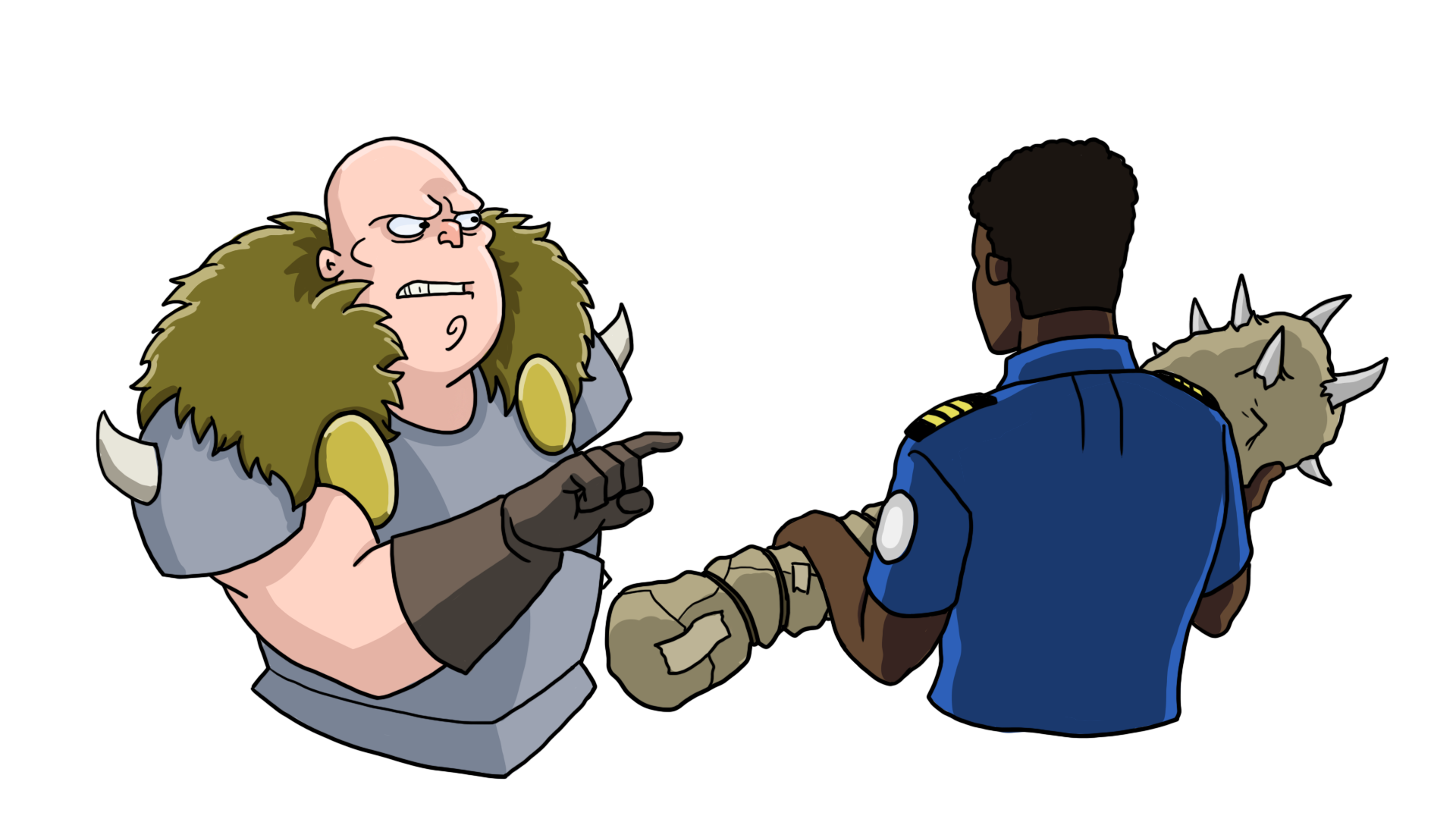
Air Travel
This is the big one – air travel is the trickiest and most anxiety-inducing travel method we’ll be talking about today, and that’s even before we factor miniatures into the mix. At least one Goonhammer writer (spoiler: It was Corrode) has had their army lost by the airline after checking their bag, and the more connections you have to make, the bigger the risk. As a general personal rule, I never check my minis. I may check the bag with a display case or clothing in it, but the minis travel with me – especially if I’m not on a direct flight.
Your best bet for safely traveling with your armies is to fit them in your carry on and store them in the overhead. This might be a problem with magnetized trays, as you’ll have to rotate your bag a bunch to get it to fit up there. For that reason, I tend to prefer flying with foam. The backpack from KR Multicase is purpose-built to fit in the overhead with a pair of card cases, and that’s often enough to hold a decent-sized army. This poses its own problems, however, and the largest of them is how to condense your army enough to make it all fit into the case. Maybe this means you have to leave that killer monster at home or limit yourself to just one game system for a convention; either way you’ll likely be traveling lighter than you would locally.
Boarding early is also going to be clutch, as later boarding groups will often have to check their bags at the gate. How early you can get on the plane depends on the airline; generally, priority boarding goes to passengers traveling in upgraded seats, i.e. first class and premium economy. But if you have enough travel time to get status, that’ll usually get you on the plane earlier. That said, you still have to be there in line to get on when that group gets called, so be attentive. You don’t want to get gate-checked if you don’t have to.
If you do check a bag – which you almost certainly will if you’re factoring a display board into your plans – opt for one that’s got a hard shell to protect your precious cargo, and cushion your cases, boards, or what have you with clothes. Also, a bluetooth tracker like an Apple AirTag is great for peace of mind, since you can see where your cargo is in real time.

Again, the goal here is to not check your models. SRM: I have personally seen porters fully yeet the bag I packed into the cargo hold, and while I respect their upper body strength, I don’t like what it does to my army. Check the FAA guidelines for carry-on sizes to make sure your army will fit in the overhead compartment, because checking your models is the last thing you want to do. Carrying on a bag is the only way to guarantee it makes it to your destination at the same time you do and while you can buy new clothes in a pinch (or wear dirty ones, we guess), and replace your toiletries, buying and painting a new army is a lot harder.
Rob: Realtalk when I’m trying to pack real light I’ll sometimes go Backpack with clothes in it to go under the seat + minis case to go in the overhead and if I have extra room in the minis case I’ll pack a change of clothes in it with the models. Even when I have to check a bag, I often put a change of clothes in one of my carry-on bags just in case.

Rob: Some other things to note: Be sure to make sure the glue you’re bringing with you can actually be taken on a plane. Flammable glues like Games Workshop’s Plastic Glue aren’t allowed on planes and may get tossed by the TSA before your flight. Even if you do have glue that can go on a plane watch out – being under pressure can affect the contents, and when you open that bottle later it can come gushing out and all over your models.
What to Do When You Arrive and Your Models Don’t
You’re not always going to be able to carry on everything, especially if your army doesn’t fit in a carry-on case. Sometimes you get to the destination but your models don’t. Maybe the airline lost your army, maybe your buddy was bringing them but got a flat tire, or maybe you straight up forgot your models or brought the wrong case. Rob: I’ve definitely forgotten minis and, in one case, an entire army when I was set to play against Felime. Just drove all the way to my in-laws’ house and left the case sitting right near my front door. It’s not great, but if you end up in this sort of situation, there’s a few ways you can work around it.
- Talk to the airline/travel company. If you have a lost bag, you should absolutely reach out to lost luggage with your airline, arriving airport, or whatever authority your transportation falls under. Usually you’ll be able to have your bag delivered within 24 hours, and often same day if you aren’t flying in on a late flight – they’ll usually be able to get your bag on the next flight out (It may be worth trying to make an earlier arrival work if you know you have to check a bag of minis). Remember to be polite with customer service reps – being mean may make you feel better but it won’t help you. They’re regular people and you want them to be on your side. Being patient and polite can be the difference between someone going the extra mile to help you and being told there’s nothing they can do.
- Talk to the event organizer. Next you should talk to the event organizer – they’ll probably understand your situation, and might be able to work something out with a loaner army. Even if you might not make the podium, you’ll still get to play.
- Call in favors from your friends. Knowing the right people in the right place can help here too, as you might have friends in the area who can lend you some stuff for the event. That said, it probably won’t be an exact recreation of your own army with your friend’s models so be sure to have a conversation with the event organizer about it before the event. They’re hobbyists too and they’ll likely get it. Rob: When Aer Lingus left Liam’s bag in the UK, he asked me to bring an extra Chaos Knights army to NOVA so he had a backup in case his army did not arrive in time.

Building for Modularity
Whatever your preferred means of carrying case, it’s a good idea to build your models so they can easily be transported in pieces. Aside from just being great for modularity in the case of different weapon options, it can make unwieldy models like aircraft, monsters, or other vehicles easier to store. Some models are easier to magnetize than others, but you’ll find guides and examples for how to magnetize almost anything somewhere online (and we’ve covered a few examples on Goonhammer). Generally you want to look for large items that stick out perpendicular to the model – things like wings, arms, weapons, and ideally anything with a flat join which is wide enough to drill a magnet-sized hole into.

Traveling With a Display Board
If you’ve seen pictures from any major event, Armies on Parade, or larger tournament, you’ll likely have seen some of the absolutely enormous display boards people build. Traveling with some of these things seems infeasible, and if you’re going really big you’re going to basically be limiting yourself to driving. That said, it’s possible to bring a display board with you even when traveling by air.
Rob: My display board for Kansas City (above) was mostly flat, but still far too large to fit in any suitcase I owned. So I packed it in bubble wrap, boxed it up, and checked it as oversized luggage, being careful to mark it as FRAGILE – the ticketing agents will also help out on this front by adding stickers of their own. When I built my display board for the Narrative in Atlanta, I purposefully built it to fit in one of my larger suitcases.
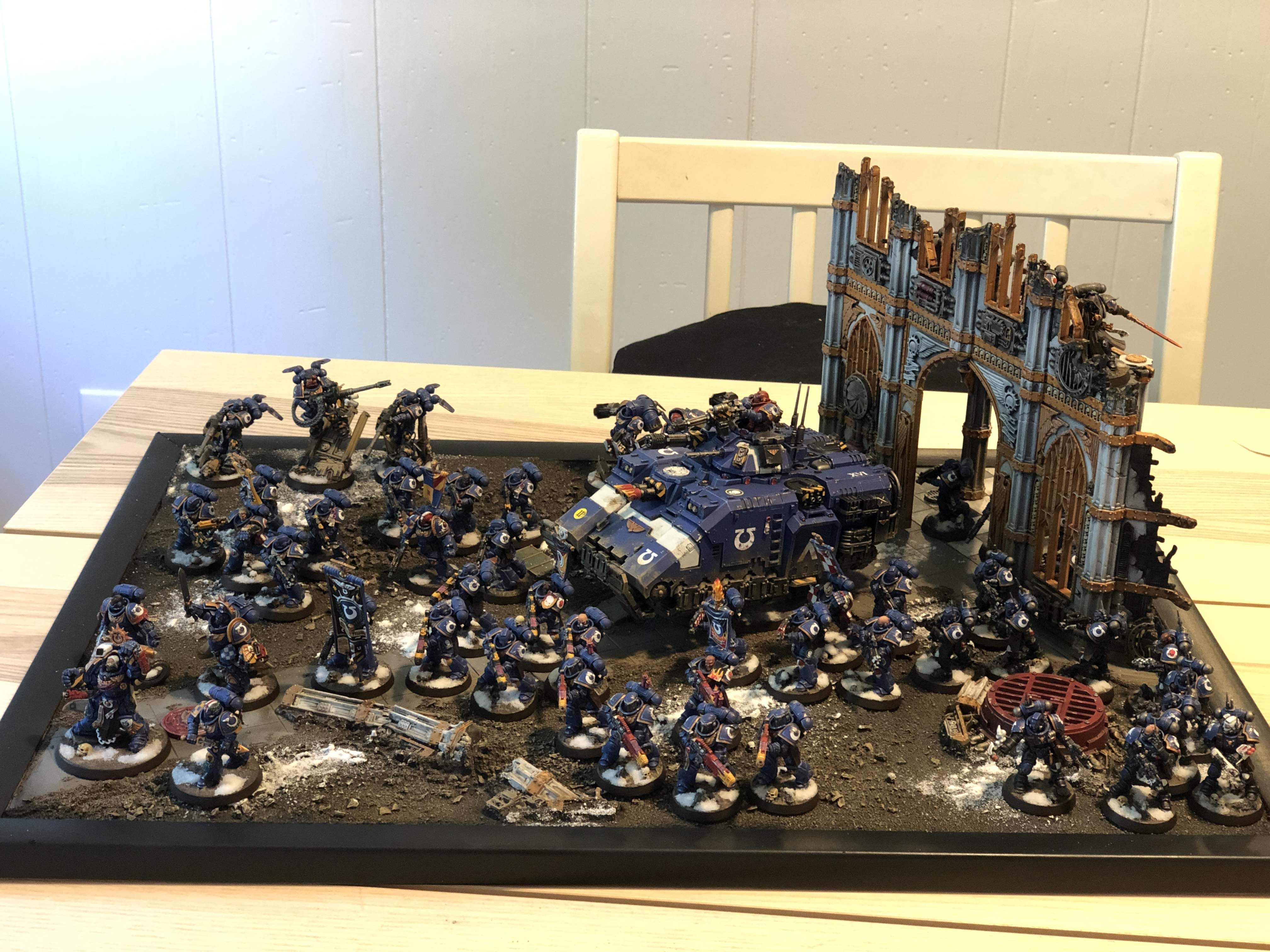
Campbell: Just like with troops and tanks, building for modularity is key. In the case of my old display board (above), I magnetized the building so it would stay firmly upright in transit, but also could be packed flat in a large bag.
Depending what you’re building for, this can go in a suitcase, but might involve checking an oversized bag or even shipping it to the venue. Check your airline’s rules for checking oversized and overweight luggage, and be prepared to spend a few extra bucks. If you’re going to ship your display board, you can call your hotel and have it ready for when you arrive, or keep it with a local friend, provided they’ve got the space for it. Just be sure to give your stuff plenty of time to arrive so you’re not pacing in the lobby 10 minutes before your first game.
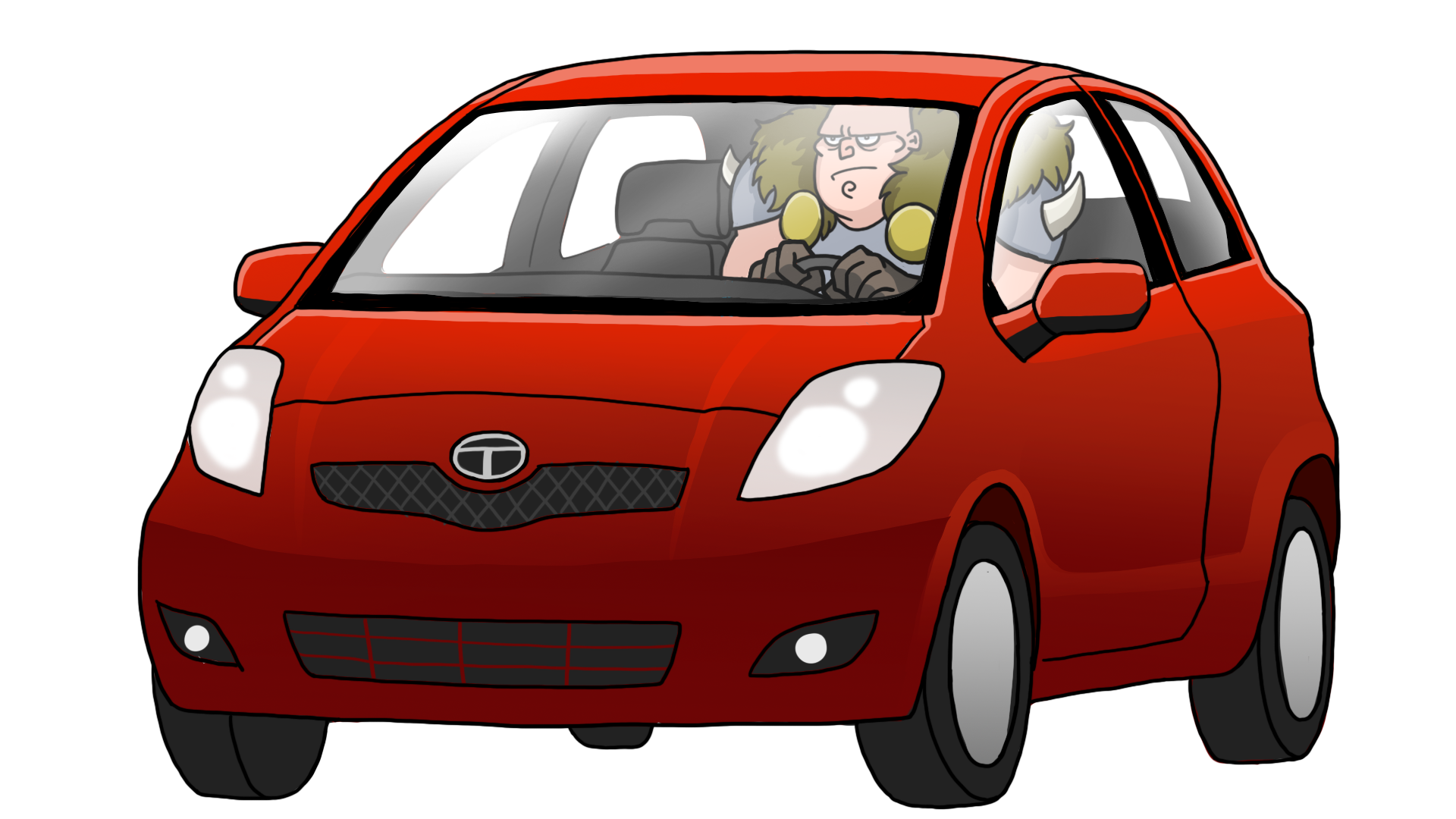
Wrapping Up (and Packing Up)
Distance doesn’t have to be a limiting factor when it comes to getting games in. Whether you’re flying across the Atlantic or just going down the street, there’s a way to safely get your models where you’re going. We’ve tried to cover all of the basics here but if there’s something you think we missed, or a sweet travel tip you’ve learned in your travels, let us know in the comments below. Or if you just want to share your own traveling with minis horror stories, we want to hear those too.
And as always, if you have any questions or feedback, drop us a note in the comments below or email us at contact@goonhammer.com. And if you’d like to support us and get access to more features in tabletop battles and Administratum or get early access to videos like our travel tips, support us on Patreon.

